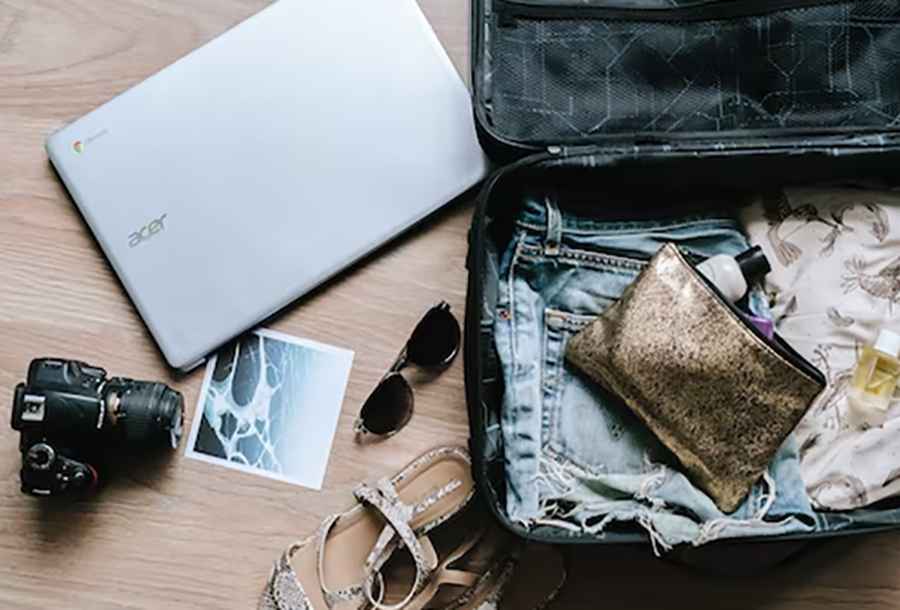3 International Travel Checklist Items To Make Your Life Much Easier
Fortunately, life has gotten a lot easier recently when it comes to packing for trips. With many things becoming increasingly digitized, more and more essentials are being stored on clouds, or at least very small devices. Fewer and fewer people remember the days of packing rolls of film, folding paper maps, and other things now considered antiquated by today’s youth.

There are, however, physical items that are still essential to traveling for all of us. And you should be sure to include them on your checklist so that you don't end up stuck out in some exotic locale wishing you'd planned more carefully.
Medications and nutritional supplements
Many things can be replaced while you're traveling. If you lose a sweater, you'll pretty much always be able to get a temporary replacement wherever you're going.
Not so with many medications. If you've got a prescription that you have to take on a daily basis, it goes without saying that packing it is a must (and you'll also want to ensure that your meds are legal in the countries you're going to - getting your lifeblood confiscated at customs because you failed to do your research is no fun!).
Even OTC medication is important. You might think that Advil will be available everywhere, so you don't need to pack any. Not so. Different countries have different standards when it comes to seemingly essential things like painkillers, and you might be surprised at the alternatives in some places. Beyond this, Advil is actually banned on most airlines and in many other types of places because any amount of it is lethal to a certain category of people. This is just an example, of course, but it pays to think about all the things you take on a daily basis and how much you need them. Same goes for vitamins and other supplements.
ID
The need to take your passport with you on international trips is obvious. What might not be so obvious is other kinds of ID. You might need a second official form in order to prove your identity in some places, so carrying a license or something else with your name and picture on it is a good idea. Also, to rent a car in many other countries you’ll need an international driver’s license. You’ll want to look into this well in advance of your trip so that you have time to complete the process.
Other forms of ID might also be necessary, depending on your situation. Sometimes essential meds are allowed for international travel, but only if you have the requisite medical docs. You’ll want to ensure that you have these and that they match the precise requirements of the places you’re going. Even Olympic athletes have had their prescriptions refused upon entry to foreign countries for failing to complete the necessary documentation!
If you’ve got overseas insurance (and you should), be sure that your insurance cards are in order. If you have a problem while you're traveling, you’ll want to be sure you can access your info as easily as possible.
If you’re still in need of a passport (or a replacement), have you considered using a US passport photos tool? It will make the process infinitely easier for you.
Electronics
While it may seem that the world is becoming more standardized with regard to plugs, cords, and the like, there are still quite a few exceptions to this. We all know that different countries use different outlet types. It can be a welcome relief to land in Thailand and find that your European two-pronged cords fit in the Thai outlets, despite the fact that these outlets have three holes rather than two. Nonetheless, the world can also be full of a lot of unwelcome surprises when it comes to utilizing different electronics and their parts.
For one thing, voltage differs from place to place. American gadgets are created for 110 voltage systems, for example, while European ones use 210v. Many an American has been shocked to find his or her hairdryer suddenly blown by a higher voltage charge than the item was intended for. Therefore, you’ll want to be sure that the adapters you bring are the right type as the small end-plugs available at the corner store are often insufficient to handle the change.
Another thing you’ll want to remember is that what seem to be universal cords should often only be used with a single device. When someone asks to borrow your iphone cord, you might get it back only to discover that it no longer works. Then you’ll be stuck, potentially out in some remote region, trying to find something that is both compatible and of sufficient quality to address your needs (beware of counterfeit packaging!).
Make a complete list, and remember: This list is just for you
In the end, you’ll want to make a list of everything you think you might need. This will, of course, depend on your priorities as well as your absolute needs. If you’ve got particularly sensitive skin and think you’ll need SPF 75 while you’re in the tropics, pack it. You might arrive at your destination and find that the shops only carry SPF 30. If it’s super important to bring your little pink bikini, put it on the list. It’s all up to you.
Just keep in mind that airline size and weight limitations are growing increasingly strict. Gone are the days when we could bring three large suitcases on any given flight. So think carefully about what you really need, and what may or may not be essential but could potentially be found abroad. With each trip you take, your list will become more and more clear.